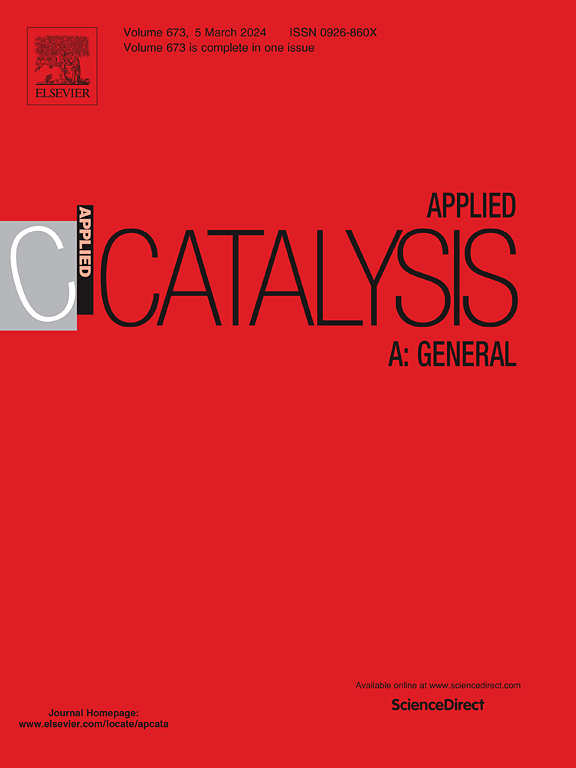层状硅酸盐镍衍生金属酸双官能团Ni/SiO2催化剂用于醇的选择性还原胺化反应
IF 4.7
2区 化学
Q2 CHEMISTRY, PHYSICAL
引用次数: 0
摘要
醇的还原性胺化反应为胺的合成提供了一种具有成本效益和可持续性的途径。然而,实现对伯胺的高选择性仍然是一个挑战。本文报道了一种经氨蒸发合成的层状硅酸盐镍催化剂(Ni/SiO2-AE),该催化剂具有优异的催化性能,醇转化率为53.2%,伯胺选择性为96.2%。这优于传统的浸渍法(转化率16.5%,选择性98.6%)和沉积沉淀法(转化率41.3%,选择性94.5%)制备的Ni/SiO2催化剂。Ni/SiO2-AE催化剂在5个反应循环中表现出显著的稳定性,具有耐久性和可回收性。表征研究表明,高催化性能源于高度分散的Ni0纳米颗粒与来自不饱和Ni(II)物种的Lewis酸位点之间的协同作用,这有助于醇的吸附和活化。此外,层状硅酸镍坚固的骨架结构有助于Ni/SiO2-AE催化剂的可回收性。金属酸双功能Ni/SiO2-AE催化剂也显示出广泛的底物适用性,有效地将各种醇转化为相应的伯胺。本文章由计算机程序翻译,如有差异,请以英文原文为准。
Nickel phyllosilicate derived metal–acid bifunctional Ni/SiO2 catalysts for selective reductive amination of alcohols
The reductive amination of alcohols offers a cost-effective and sustainable pathway for the synthesis of amines. However, achieving high selectivity for primary amines remains a challenge. Herein, we report a nickel phyllosilicate catalyst (Ni/SiO2-AE) synthesized via ammonia evaporation, which demonstrates superior catalytic performance with 53.2% alcohol conversion and 96.2% primary amine selectivity. This outperforms conventional Ni/SiO2 catalysts prepared by impregnation (16.5% conversion, 98.6% selectivity) and deposition-precipitation (41.3% conversion, 94.5% selectivity). The Ni/SiO2-AE catalyst exhibits remarkable stability over five reaction cycles, demonstrating both durability and recyclability. Characterization studies reveal that the high catalytic performance stems from the synergy between highly dispersed Ni0 nanoparticles and Lewis acid sites derived from unsaturated Ni(II) species, which facilitate alcohol adsorption and activation. Additionally, the robust skeletal structure of nickel phyllosilicate contributes to the recyclability of the Ni/SiO2-AE catalyst. The metal–acid bifunctional Ni/SiO2-AE catalyst also displays broad substrate applicability, effectively converting diverse alcohols into their corresponding primary amines.
求助全文
通过发布文献求助,成功后即可免费获取论文全文。
去求助
来源期刊

Applied Catalysis A: General
化学-环境科学
CiteScore
9.00
自引率
5.50%
发文量
415
审稿时长
24 days
期刊介绍:
Applied Catalysis A: General publishes original papers on all aspects of catalysis of basic and practical interest to chemical scientists in both industrial and academic fields, with an emphasis onnew understanding of catalysts and catalytic reactions, new catalytic materials, new techniques, and new processes, especially those that have potential practical implications.
Papers that report results of a thorough study or optimization of systems or processes that are well understood, widely studied, or minor variations of known ones are discouraged. Authors should include statements in a separate section "Justification for Publication" of how the manuscript fits the scope of the journal in the cover letter to the editors. Submissions without such justification will be rejected without review.
 求助内容:
求助内容: 应助结果提醒方式:
应助结果提醒方式:


